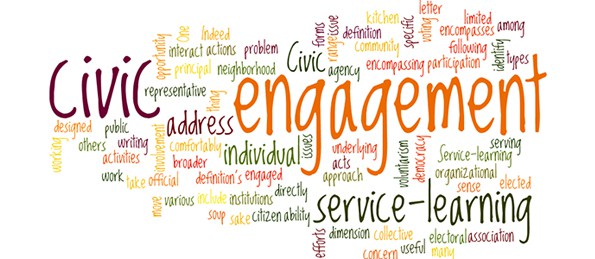By Kwami Ahiabenu, II
Traditionally, “civic action” is seen as a public space where citizens work towards a collective good. Fast forward today, technology is expanding civic action to include many more public actions especially the ones of interactive nature. Civic action appears to be one of those phenomena which defy technology as its most successful episodes are driven by actual people, doing actual things; writing, picketing, marching etc. The Arab spring and a host of other events, perhaps before and after, have shown that digital technology is opening unparalleled arenas for collective action to happen without the need for face-to-face engagement. dnp for sale
A majority of civil society actors have increased their use of new digital technologies in conjunction with time-tested strategies for advocacy and to bring about change in critical areas of development. Others have as yet to join the space, in spite of admitting that technology will indeed help their work in many ways than one. For this group, costs are the main deterring factor. The area of cost in using new digital technologies for implementing collective action strategy has not been discussed enough. Largely because there is a perception out there among donors and other stakeholders that the use of new digital technologies, especially social media is “free”. The fact is, there is no free lunch in a full operationalized free market of today. Therefore there is a need to interrogate issues of associated costs when it comes to civic action online.
A good starting point for any organization interested in using digital technology is to develop a written strategy which provides clear-cut goals. This strategy must be accompanied by a well-thought-out implementation plan which will operationalize the strategy and provide a map indicating where resources such as materials, time and money needed to accomplish the mission of driving the use of technologies will be found. Factors to be considered in developing this strategy include an in-exhaustive list such as audience characteristics, time frame, resource availability, the relationship between online civic action and the organization’s other face to face strategies, measurable goals and a framework for measurement and analysis.
Cost Build Up
In mapping resources needed for supporting civic action online, a good starting point will be the classification of key costs items into four main areas namely technology, human resources, time and money.
In looking at technology key cost elements to consider are hardware and devices. For instance, it is important to have a good camera if you are going to tell compelling stories online with pictures of civic actions. Related to this is an investment in a good video camera plus lighting if you are going to stream online and you are aiming to ensure audiences participate by seeing good quality visuals. The suggestion is to lease or rent when you need to run a campaign for example, if you cannot justify the cost of investing in these devices for your organization. Another consideration to make is to put money in procuring software especially online ones which are required to support civic action. There are increasingly more and more free online software but some still require paid up subscriptions in order to utilize more unique features.
Another critical cost component is human resources. Ensuring you have the right skills and know how to craft relevant content, deliver such content, and ensure interactivity with the content leading to the achievement of a call to action goal is critical.
Firstly the organization must appoint one person or a group of persons with the mandate of using new digital technologies for driving civic action agenda. Such persons could be in full time, part time or volunteering positions. Some organization tend to outsource some or all of these tasks to persons outside the organization thereby negating the need to recruit internally. A key requirement for success is continually professional development for this team since this area is fast growing with new things being introduced each passing day. Human resource base development can take place by sending people on the team to attend training programmes, participate in relevant events and by reading related publications. Happily there are a number of free online courses to support civil society organization interested in developing the capacity of their staff in this area. Furthermore, networking with other civil society actors to share ideas, challenges and learn new strategies can also support skills and knowledge development processes.
Time is a very valuable resource when it comes to undertaking civic action online, largely by its nature, online or social media interaction is time consuming in the sense that, the organization leading a campaign must interact and connect with users in order to achieve better results. A successful campaign for instance will mean the organisaiton can interact with 1,000 users or more within a short period of time , to respond to questions or clarify positions or similar. . This usually will mean full time commitment of staff and if this is not budgeted for , could result in failure of an online civic campaign due to the inability of the organization to interact with intended audience in a timely fashion.
Lastly , financial resources are a huge cost component in the use of new digital technologies to drive civic action online. Money can come in handy to pay stipends to volunteers or staff who will be monitoring online campaigns, honorariums to social media influencers, internet bundles and call airtime among other costs all need to be considered in planning for online civic actions.
How Much to Spend?
In deciding to use new digital technologies for civic action a lot of factors including the budget available for this activity within the overall organizational budget must be considered alongside questions such as, is this expenditure for a particular campaign or is it a part of an ongoing organizations activities?; what is the ability to sustain this spend over time and what are the opportunity costs?. The practical approach will be to use a return on investment as a key factor in gauging how much to spend. This can help you to evaluate the efficiency of an investment (online civic action) compared to the efficiency of a number of different investments such as organizing a face to face rally or taking out a newspaper ad or other. Beyond, Return on Investment(ROI) that is calculating the return on the organizations investment in the use of digital technologies for civic action, there is the need to measure relationship, engagements, long-term payoff and not immediate results.
Conclusion
The use of new digital technologies for advocacy and driving change is gradually become the norm, therefore civil society actors at grassroots, national and international level must consider developing clear-cut dynamic strategies with eyes on cost implication and flexible implementation plans plus requisite resources in order for them to ensure they can use ICTs to support their organizational vision.






